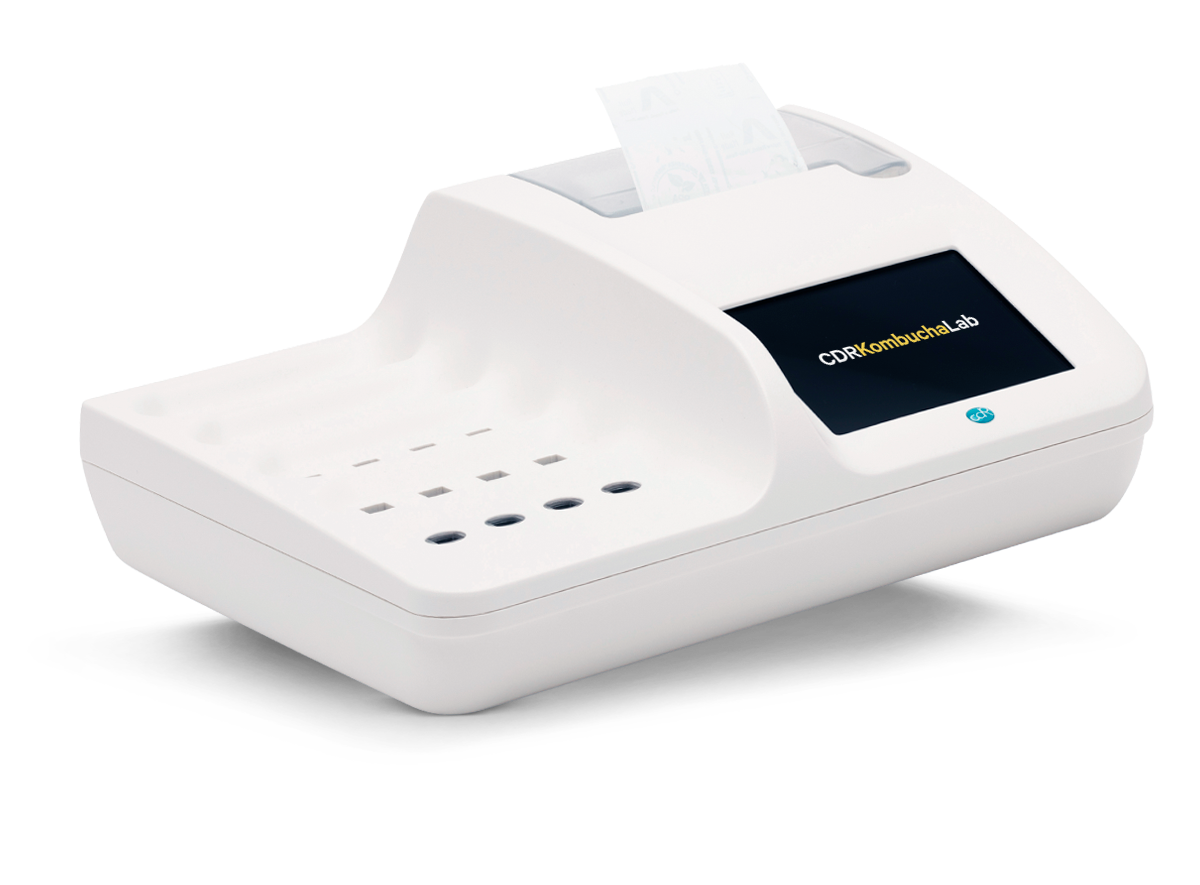Determination of Total Poliphenols Index in Kombucha
Kombucha, being a fermented beverage obtained from tea, contains polyphenols and catechins. These can vary during the fermentation process so their quantification is a very important quality parameter for production purposes. The polyphenolic concentration also affects the organoleptic qualities of the drink. In this sense, the management of this parameter acquires even more importance.
Method
Test Principle
Polyphenols absorb at a wavelength of 280 nm. Absorption at this wavelength is proportional to the polyphenolic concentration present in the sample.
Calibration curve
The calibration curve of the CDR KombuchaLab instrument, obtained by comparing the CDR method with the method for determining the Total Polyphenols at 280nm, confirmed an excellent linearity of the system over the entire measurement range.
...
Reagent test Kits
Measuring range
| Analyses | Measuring range | Resolution | Repeatability |
|---|
The Analyzers for process and quality control in kombucha brewing
CDR KombuchaLab
- Complete analysis panel, supplied already configured
- Up to 16 determinations simultaneously
- Possibility of carrying out analyses of the same sample
- Integrated printer
- Full connections (LAN - USB - Bluetooth barcode/QR code reader)
CDR KombuchaLab Jr
- Partial analysis panel, supplied configured with 3 analyses of your choice, implementable
- Up to 3 determinations simultaneously
- Wireless connection to external printer
- USB connections
